Exploration Rush at Tonopah, Nevada
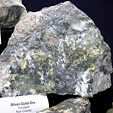 A few months later, a young, greenhorn lawyer agreed to pay to have it assayed, and the quartz turned out to be rich in both gold and silver.
A few months later, a young, greenhorn lawyer agreed to pay to have it assayed, and the quartz turned out to be rich in both gold and silver.
Ancestral Yuba River Placer Gold Deposits
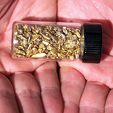 The small-scale miner has reasonable opportunity to exploit some of these small, rich placer gold deposits.
The small-scale miner has reasonable opportunity to exploit some of these small, rich placer gold deposits.
Jamestown and Our Mother Lode Gold Rush Adventures
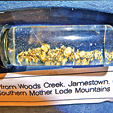 There are many other locations in the area where gold has been found, but Woods Creek is the most famous of the creeks and gulches in the area where the 49ers searched for that elusive yellow metal.
There are many other locations in the area where gold has been found, but Woods Creek is the most famous of the creeks and gulches in the area where the 49ers searched for that elusive yellow metal.
Using Favorable Rock Types to Find More Gold
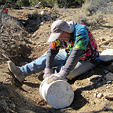 The more experienced prospectors know these lesser known spots are the types of places where big finds are still made.
The more experienced prospectors know these lesser known spots are the types of places where big finds are still made.
The Mysterious Telluride Minerals
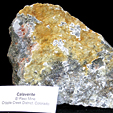 …let’s dive in and take a closer look at these rich gold and silver-bearing minerals to find out what they are, where they form, and how to identify them.
…let’s dive in and take a closer look at these rich gold and silver-bearing minerals to find out what they are, where they form, and how to identify them.
The Coolgardie Gold Mining Camp of Southern California
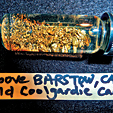 The area was mined intermittently from around 1900 to 1915, but was also mined in the late 1800s, with a total output valued at about $100,000, which is around $9.5 million at the current gold price.
The area was mined intermittently from around 1900 to 1915, but was also mined in the late 1800s, with a total output valued at about $100,000, which is around $9.5 million at the current gold price.
Prospecting for Copper—What to Look for on the Outcrop
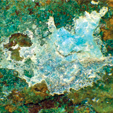 For the prospector, knowing what oxidized hydrothermal alteration looks like in the field is an important exploration tool.
For the prospector, knowing what oxidized hydrothermal alteration looks like in the field is an important exploration tool.
Polymetallic Skarn Deposits
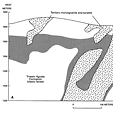 Polymetallic skarn deposits are an interesting class of deposits that can contain a number of different types of metals.
Polymetallic skarn deposits are an interesting class of deposits that can contain a number of different types of metals.
All About Lead Minerals, Silver and Gold
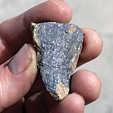 Many miners know that lead is very commonly associated with silver values, but the truth is that it is also associated with gold values in many locations as well.
Many miners know that lead is very commonly associated with silver values, but the truth is that it is also associated with gold values in many locations as well.
The Potholes—California’s Oldest Known Mining District
 Every time we prospected here we found gold, sometimes some really coarse flakes, but no large nuggets (yet).
Every time we prospected here we found gold, sometimes some really coarse flakes, but no large nuggets (yet).
Sixteen to One Gold Mine: Going Underground - Pt II
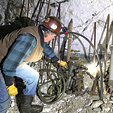 We descended hunched over, down a long, steep, wooden staircase to the 1,000-level.
We descended hunched over, down a long, steep, wooden staircase to the 1,000-level.
All About Native Silver
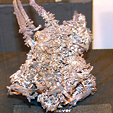 Some of the wire forms are strange and fantastic, with wires sticking out in twisted, seemingly random directions. Others have deformed crystals and all of them have significant value to collectors.
Some of the wire forms are strange and fantastic, with wires sticking out in twisted, seemingly random directions. Others have deformed crystals and all of them have significant value to collectors.
Sixteen to One Gold Mine: Unique Challenges and Potential Rewards - Pt I
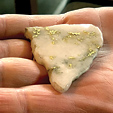 Many of the Sixteen to One’s challenges arise from its unusual geology and the pocket characteristics of the ore deposits.
Many of the Sixteen to One’s challenges arise from its unusual geology and the pocket characteristics of the ore deposits.
What About Palladium?
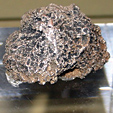 Palladium may well be an underexplored element and therefore an opportunity for prospectors and geologists. This is because they are often less than obvious and other than the native metals, a chemical analysis of samples is required to identify PGM-enriched rocks.
Palladium may well be an underexplored element and therefore an opportunity for prospectors and geologists. This is because they are often less than obvious and other than the native metals, a chemical analysis of samples is required to identify PGM-enriched rocks.
Unique Rare Earth Mine in Texas
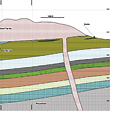 Exploration for and prospecting in search of similar deposits should focus on rhyolite bodies located in fluorite-bearing areas.
Exploration for and prospecting in search of similar deposits should focus on rhyolite bodies located in fluorite-bearing areas.
Gold in The Midwest--Part I
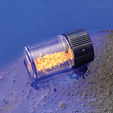 Gold can potentially be found in all the glaciated areas of the Midwest, but to find it in any appreciable amount one needs to look to areas where the gold gets concentrated by more recent water flows.
Gold can potentially be found in all the glaciated areas of the Midwest, but to find it in any appreciable amount one needs to look to areas where the gold gets concentrated by more recent water flows.
Gold and Silver Deposits of Bodie, California
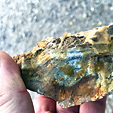 Bodie, California, in its heyday, was once rumored to be one of the roughest and most lawless towns in the American West.
Bodie, California, in its heyday, was once rumored to be one of the roughest and most lawless towns in the American West.
Hard Rock and Placer Gold of Manhattan, Nevada
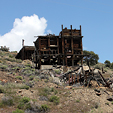 He found 5 to 7 feet of gravel containing half an ounce per yard. This started a rush of placer activity and several other shafts were sunk, with some large multi-ounce nuggets being found.
He found 5 to 7 feet of gravel containing half an ounce per yard. This started a rush of placer activity and several other shafts were sunk, with some large multi-ounce nuggets being found.
Silver Peak, Nevada: A Little of Everything
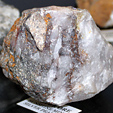 Silver Peak is a small mining community in Esmeralda County in west-central Nevada, about 30 miles west of Goldfield. Although it’s fairly remote, it’s been an important mining center since the early days.
Silver Peak is a small mining community in Esmeralda County in west-central Nevada, about 30 miles west of Goldfield. Although it’s fairly remote, it’s been an important mining center since the early days.
Mohave County, Arizona: The Oatman/San Francisco Mining District
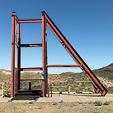 The Oatman/San Francisco Mining District’s historic gold production of 2.2 million ounces of gold since the 1880s makes this area Arizona’s greatest primary gold producing district.
The Oatman/San Francisco Mining District’s historic gold production of 2.2 million ounces of gold since the 1880s makes this area Arizona’s greatest primary gold producing district.












